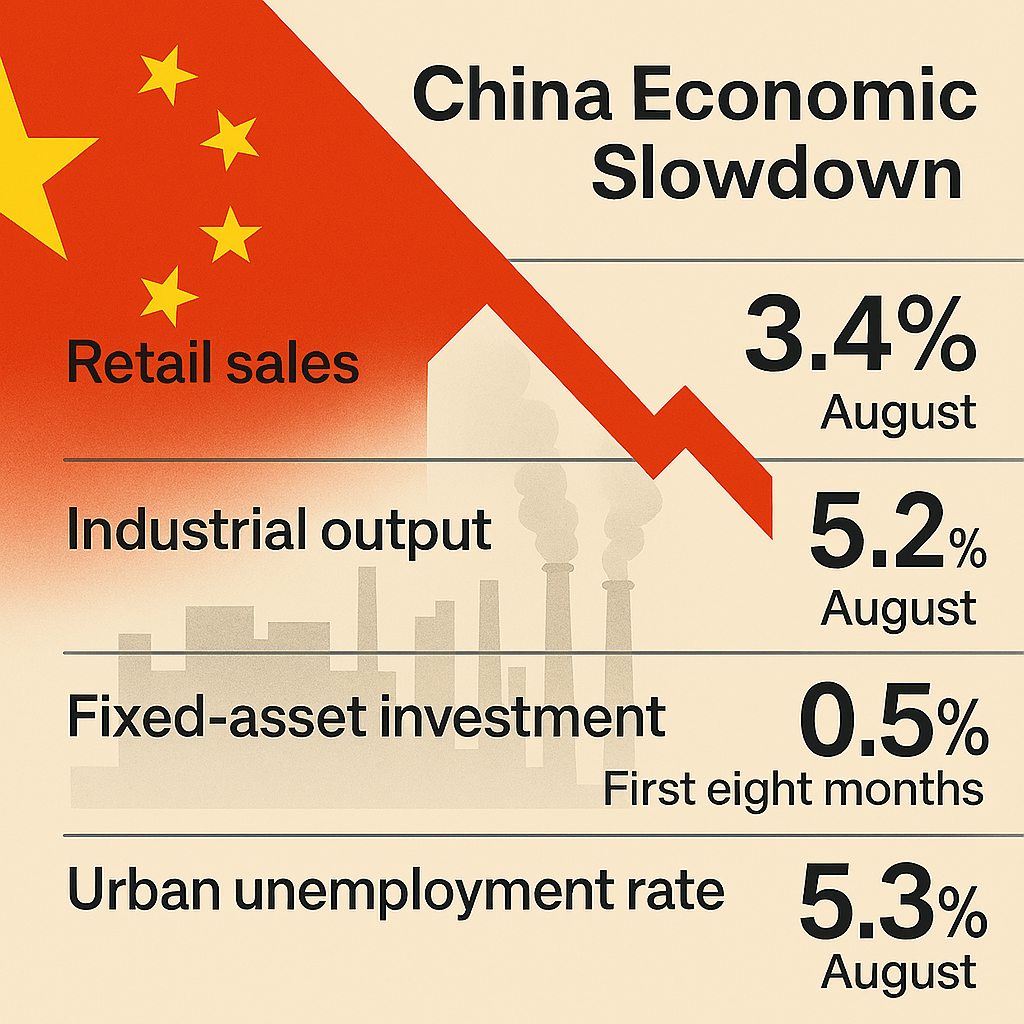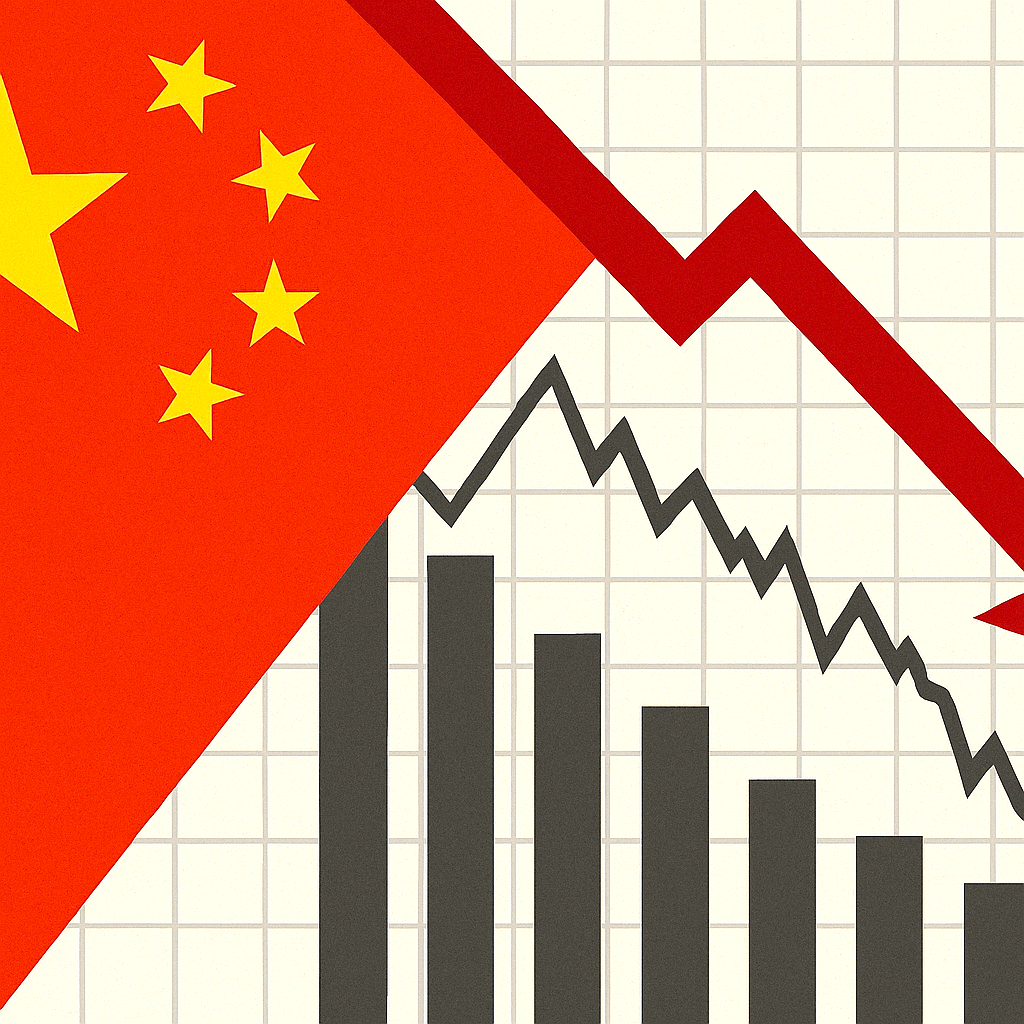China’s economic recovery continues to show signs of strain, with the latest figures for August 2025 revealing a slowdown across retail sales, industrial output, and fixed-asset investment.
This raises fresh concerns about the sustainability of growth amid persistent domestic and global headwinds China is facing.
Retail sales rose by 3.4% year-on-year, falling short of analysts’ expectations of 3.9% and marking a deceleration from July’s 3.7% growth.
The slowdown was particularly pronounced in urban centres, where consumption lagged behind rural areas.
Consumer
Categories such as furniture, jewellery, and entertainment goods reportedly saw robust gains, but these were offset by weaker demand for electronics and home appliances, as the impact of Beijing’s consumer trade-in subsidies began to fade.
Industrial output also disappointed, growing just 5.2% compared to 5.7% in July—its weakest performance in over a year.
Economists had anticipated a repeat of July’s figures, but Beijing’s crackdown on industrial overcapacity and subdued domestic demand appear to have taken a toll.

Fixed-asset investment, a key driver of long-term growth, expanded by a mere 0.5% in the year to date, down sharply from 1.6% in the January–July period.
Real estate
The real estate sector remains a major drag, with investment plunging 12.9% over the first eight months. While state-owned enterprises have continued to prop up infrastructure and high-tech investment, private sector activity has contracted, highlighting a growing imbalance in capital allocation.
The urban unemployment rate edged up to 5.3%, attributed in part to seasonal factors such as university graduations.
However, the broader picture suggests underlying fragility in the labour market, with policymakers warning of “multiple risks and challenges” ahead.
Despite the underwhelming data, markets remained relatively calm. The CSI 300 index rose nearly 1%, reflecting investor expectations that Beijing may introduce incremental policy easing.
Stimulus?
However, economists caution that a large-scale stimulus is unlikely unless the government’s 5% annual growth target is at risk.
As China grapples with deflationary pressures, weakening consumer sentiment, and a faltering property market, the latest figures underscore the need for more targeted support and structural reforms.
Without a decisive shift in policy, the world’s second-largest economy may struggle to regain its footing in the months ahead.


